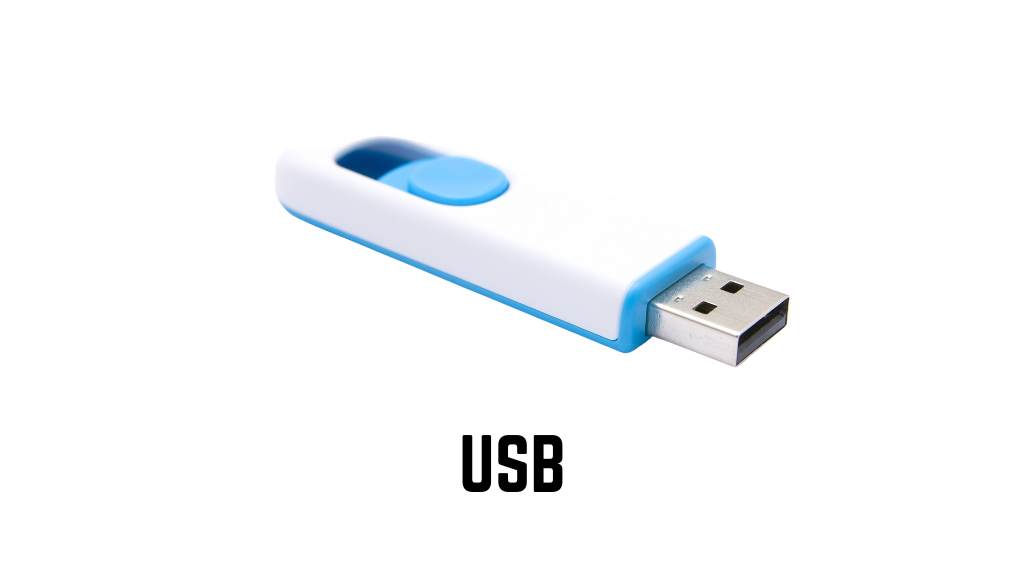Revolutionizing Supercomputing: The USB-Powered Future of High-Performance Computing
James Bond
. 5 min read
The abbreviation "USB" refers to the "Universal Serial bus" standard. And no, there is no such thing as free bus rides. There, although hypothetically, is a bus that offers cornflakes for breakfast. When Intel and six other firms developed the first USB in 1995, it revolutionized the computer industry. The purpose of the gadget was to consolidate the clutter of wires behind the PC into a single entry point. Since its inception, the USB standard has been revised ten times, adapting to the evolving needs of technology and ensuring compatibility across various devices, just like the diverse range of online chat platforms available to connect and communicate with others.

The USB-Powered Future of High-Performance Computing
As of late, people have been switching to USB cables that use the type C standard
Reversible and packing more power and data transmission than any other connection type before the USB paradox, which occurred when users attempted to plug in their USB devices in the wrong order. To succeed, though, you need to give it three attempts at the very least. The correct orientation of the connector is shown by the USB logo on top.
On average, that's four gadgets for every individual
Not only do more than half of the world's almost 8 billion inhabitants own a mobile phone, but there are more than twice as many individuals who have two phones. On the other hand, only around half of the world's population has access to a toothbrush. The Internet wasn't even around when email was developed. Although the Internet has been around since January 1, 1983, the first electronic communication between computers occurred in 1969.
Email addresses back then consisted of random strings of numbers and characters
The Firefox name and emblem may lead you to assume that the browser's mascot is a fox, but it's really a red panda, and "Firefox" is its nick name. When your phone doesn't truly vibrate, yet you still think it does because of Phantom Vibration syndrome. It's common among those who use their phones excessively. In 1986, Apple released a range of clothes under the moniker The Apple Collection as a means of gauging client loyalty. The first Apple Watch was also introduced.
The typical home connection is at about 25 Mbps
This is enough for typical, everyday uses, such as streaming or viewing YouTube videos in high resolution. The 91 gbps speed of NASA's Internet connection is, by their own admission, inadequate. The esnet is used by the space agency. In 2010, Google researchers used supercomputers and a unique mathematical method called ESnet to keep track of all their data. They discovered that a Rubik's Cube could be solved with 20 moves or less.
As gazing at a computer screen requires a lot more concentration
Standard blink rate in daily living is 20 times per minute. That's why it's bad for your eyes to gaze at a screen for too long; they become dry and weary. In the early 1960s, the first mouse for use with computers was developed. The XY indication was a positional indicator for a visual interface. It was initially used in 1968 to show off what then-future computers were capable of in terms of word processing, graphics, and windows. Because of the protruding cable, the innovation became known as a mouse.
The exposure time for the first ever photograph was a whopping 8 hours
The photograph, titled "view from the window of Le Grand," was taken between 1826 and 1827. The exposure period was reduced to 15 minutes in later years, but by that point most individuals had learned to avoid smiling for the camera. The spam e-mail service got its name from the processed meat product of the same name. It was a staple of a hit programme airing on television in the 1970s. Always appearing in your inbox like spam. Every single day, about 100 billion spam emails are sent and received. That's almost eighty-five percent of all emails ever sent.
I get what seems like the lion's share of them in my email
Around a third (36%) of them are advertisements. Just one person responds to every twelve million spam emails received. Around 90% of the world's currency is now stored digitally on computer servers and is transferred digitally online via bank cards. All of this calls for the transfer of digital money. The first item to be transferred digitally with the use of a barcode was a pack of gum. They were curious as to whether or not it would work on anything of that size. While Norman Woodland devised the barcode in 1952, it wasn't widely utilized for product tagging until 1974.
The UPC (Universal Product Code) is a barcode standard that is still widely used today
Usb Universal Product Code, USA. It's a real head scratcher sometimes. Sometimes more than two million individuals. In the United States, they will connect using AOL's dial-up service. High-speed Internet may be difficult to come by and costly to maintain in more remote areas of the United States. For this reason, AOL has kept its dial-up service active. A back rub was Google's original moniker. A little while later, the company's creator decided to switch to a more memorable moniker.
Set a New Standard for Processing Speed
In 1964, the CDC 6600, often regarded as the world's first supercomputer, set a new standard for processing speed. More over 5 tonnes in weight, it had more than 100 miles of wire and could conduct 3000000 operations per second. Only one hundred of these machines were ever produced. They were number one for five years until the CDC 6700 model came out. It took 75 years to accomplish. A phone call, naturally. In 38 years, radio had 50 million listeners. There was a 13-year lag between the introduction of television and its widespread use.
Nintendo is known now for its video game consoles, but that wasn't always the case
Making playing cards was their first venture. The firm first launched in 1889, but it wasn't until 1972 that they began developing their video gaming systems. On January 26, 1926, John Logie Baird aired the first television transmission, featuring the heads of two dummies. He controlled them in full view of the camera but out of sight of the crowd. The technologies he used would be considered antiquated by today's standards.
More advanced techniques quickly supplanted it
With the very first tweet ever sent, Google used binary. This is how it appeared. In binary, this would equate to "I'm feeling fortunate" in English. Although everyone in the world may use GP S for free, it costs over $2.0 million every day to keep it up and running. The root word of robot, robotic, meaning to serve or obey. For the simple reason that humans hoped to offload some of their most tedious and undesirable tasks onto mechanical workers.
When it comes to printing, not all typefaces on a computer are created equal
Century Gothic, Calibri, and Times New Roman are just a few of the lighter fonts with thinner and tighter letters that may help you conserve ink over time when compared to bolder fonts like Georgia's impact and web dates. The realization In March of 2020, Lander, which is now exploring Mars, ran significant difficulties. The digging gadget, known as a mole, became stalled in the Martian dirt. When repeated efforts by NASA engineers to remove it failed, they urged creative problem solving.
Conclusion
In conclusion, the world of technology and innovation is constantly evolving, with new standards, devices, and trends shaping our daily lives. From the humble beginnings of USB cables and email addresses with random strings of characters to the high-speed Internet connections and digital currencies we have today, technology has come a long way. As we look ahead to the future, we can only anticipate further advancements and breakthroughs that will continue to shape the way we live, work, and interact with technology.
More Stories from
International Telecommunication Union (ITU): Bridging the Global Digital Divide
The International Telecommunication Union (ITU) is a specialized agency of the United Nations, dedicated to promoting global connectivity.
Unleashing the Power of Software Testing Metrics: A Guide to Effective Measurement and Decision-Making
This article emphasizes the importance of software testing metrics and provides guidance on selecting the most relevant metrics for a project.
Illuminating the Future: A Comprehensive Guide to Light Emitting Diodes (LEDs)
Discover the history, working principles, and diverse applications of LEDs, from lighting and displays to automotive advancements.
The World Wide Web: Connecting Humanity Across Time and Space
From its inception by Sir Tim Berners-Lee to its exponential growth, learn how the Web revolutionized communication, commerce, and society at large.
Introduction to the Theory of Automata and Formal Languages
Learn how automata models and grammars shape programming languages, artificial intelligence, and more.
.png?height=40)









.png?width=40&aspect_ratio=1:1)
